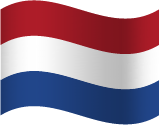PR - IS IT COSTLY TO EXPAND YOUR LIVESTOCK FARM NEAR A NATURA 2000 AREA IN THE EU?
Abstract
Natura 2000 areas are designated according to the EU's Birds and Habitats Directives in order to protect particular habitats and species from deposition of nitrogen caused by ammonia emissions. Livestock farming is the primary source of this pollution. The purpose of the analysis is to compare the costs of reaching the ammonia emission targets for different livestock farms near Natura 2000 sites in the Netherlands, Schleswig- Holstein, and Denmark. The analysis looks at regulatory aspects, the emission requirements and the cost of implementing the technologies to reduce emissions. The selected case farms are a finisher farm, a dairy farm and a broiler farm, and the distance to a Natura 2000 site is 400 metres. In all three countries, a relatively low share of livestock farms is situated near Natura 2000 areas. The regulatory approach is very different in the three countries and key issues are additional deposition from projects, neighbouring livestock farms, the inclusion of background deposition and the critical load levels used. The findings suggest that the requirements near Natura 2000 in many cases can be so high that farms will expand at a different site instead.
Keywords: Natura 2000, Ammonia, costs, livestock regulation, deposition



Organization(s): University of Copenhagen (1), University of Kiel (2), Wageningen University and Research (3)
ISBN Number:
